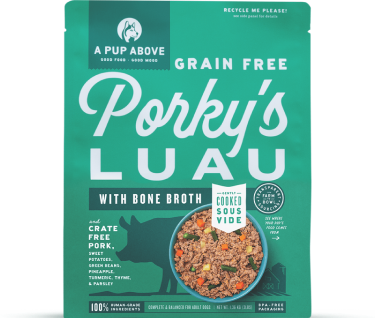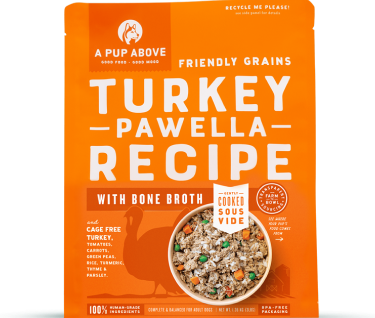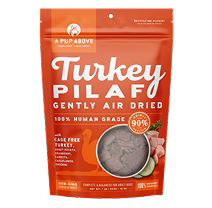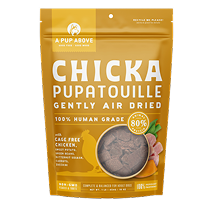A Guide to Taking Care of Your Dog’s Oral Hygiene and Dental Health
A Guide to Taking Care of Your Dog’s Oral Hygiene and Dental Health

Taking care of your dog’s dental health is crucial for their overall wellness. Know the risks, benefits, and the hows of taking care of their dental health.
At-Home Oral Hygiene
A dog’s oral health care first begins at home. Sadly, nearly two-thirds of dog owners fail to give their dogs the veterinarian-recommended dental care, according to the American Animal Hospital Association. Periodontal disease is the most frequent clinical ailment in adult dogs. By the age of three, almost all dogs have some form of dental disease.
Brushing your dog’s teeth regularly at home is the single most effective way to maintain their teeth health, especially in between dental cleanings, as it may decrease or even eliminate your veterinarian’s need for pet dental cleanings. Brushing daily is excellent, but it is not always possible; therefore, brushing a few times a week might be helpful. Dogs often tolerate brushing, but if you have issues, a handy tip is to dip the brush you will be using in some beef bullion and start massaging around your dog’s mouth, working into their mouth.
Many dog products on the market claim to promote oral health, such as Chlorhexidine, oral rinse gels, special foods, and chews, but not all work. So be sure to discuss any dental products, treats, or dental-specific diets you’re considering for your dog with your veterinarian to make sure they will benefit from them.
What Is Veterinary Dentistry Exactly?
Your dog’s dental care includes cleaning, filing, extracting, repairing, and adjusting its teeth and many other aspects of oral health care. Veterinarians or board-certified veterinary dentists should perform these treatments. Veterinary technicians are also included but may have to be under the direction of a veterinarian as prescribed by state or provincial laws.
The Process
Your dog’s cleaning begins with the veterinarian performing an oral examination of your dog’s mouth to assess the jaw’s health and the tooth, roots, and gumline. Radiographs (X-rays) may be required before the complete dental cleaning and assessment. They are generally conducted under anesthesia since most pet dental diseases occur below the gumline, which is not visible. A process called "scaling" (to remove any dental plaque and tartar) is done, and polishing is performed on your dog’s teeth during regular dental cleanings.
Risks of Nonanesthetic Dental Cleaning
While nonanesthetic dental cleaning sounds like a good, all-natural approach, not all dogs will benefit from this approach. Dogs with anxiety or those that are excessively hyper may not be the best candidate as some stranger will be restraining them, trying to get into their mouth. Plus, they will feel every poke and prick done to them.
You also will not be getting a dental X-ray since the animal needs to be under anesthetics to get them taken as the animal’s bite is originally too powerful for the X-ray plates. Since most issues start below the gumline, serious problems can go undetected. Non-anesthetic dental cleaning and scaling will not reduce the risk of periodontal disease. Thus, cleaning and scaling below the gumline is critical and can’t be done without an anesthetic.
Common Dental Diseases In Dogs
Many of the same or comparable oral disorders that affect humans can affect dogs. However, although tooth decay or cavities are the most frequent dental disease in humans, periodontal disease is more common in dogs.
Periodontal Disease
Periodontal disease refers to infection and inflammation of the periodontal tissues (the tissues surrounding the tooth). Specifically, there are four periodontal tissues.
The first sign of periodontitis is gingivitis, which is the buildup of plaque and tartar. If the infection is not addressed, it will cause bone erosion and deepen the condition. The tooth will eventually get loose and may fall out. Periodontal disease affects more than two-thirds of dogs over the age of three, making it the most frequent disease afflicting dogs.

Copy and paste the embed code below to share it on your website:
Tooth Resorption
Tooth resorption is a tooth-loss condition. It usually occurs without any visible signs. It can only be diagnosed by doing an X-ray as the sensitive dentin of the tooth is slowly exposed. Tooth resorption is painful, often accompanied by muscle spasms or trembling of the jaw whenever the lesion is touched. Symptoms of tooth resorption can include the following:
- Increased salivation
- Oral bleeding
- Difficulty eating
The loss of the crown structure may also lead to fractured teeth. There are seven forms of tooth resorption in dogs: internal inflammatory resorption, internal surface resorption, external surface resorption, external replacement resorption, and external cervical root surface resorption.
Treatments
Tooth resorption is thought to be gradual and can occur in several phases. These are the treatment options:

Copy and paste the embed code below to share it on your website:
Endodontic Disease
Endodontic disease, often known as pulpitis, is the destruction or death of the tooth’s pulp. Endodontic disease in dogs can cause the following symptoms:
- The tooth or teeth are discolored (black, gray, pink, or purple).
- Drooling excessively
- Bad breath
- Loss of Appetite
Many dogs have a strong appetite, though, and may not show any signs of pain from pulp inflammation. Thus, regular dental checkups for our canine companions are necessary for several reasons.
Types of Endodontic Disease
Reversible. The endodontic disease may be considered reversible when the pulp inside the tooth is injured but not dead.
Irreversible. Once the pulp inside the tooth begins to die, the endodontic disease is usually irreversible. The tooth is no longer viable once the pulp has died and started to deteriorate. The dead pulp will need to be evacuated through a root canal or a complete tooth extraction to prevent further infections.
Causes
Generally, trauma to the tooth, such as a tooth fracture, is the most common cause of endodontic illness in dogs. Chewing on objects that are too firm for their teeth or being hit in the face or jaw can cause trauma too. While less common in canines, cavities can also be the culprit behind endodontic disease.
Treatments
Irreversible. If the case is irreversible, it usually necessitates either whole tooth extraction or root-canal therapy to eliminate the illness.
Reversible. If the condition is reversible and the tooth can be saved, the veterinarian may recommend critical pulp therapy to keep the remaining viable tissue alive. This procedure begins with removing damaged or infected tissue and applying a medicated dressing to protect the healthy tissue and promote healthy regeneration. When used in conjunction with antibiotic treatments, this medication is most successful. Unfortunately, it is rarely helpful for dogs older than two years.
Fractured Canine Tooth
While not a disease, it is a common oral problem in dogs, and fractured teeth can often lead to infections, especially if the fractured tooth has exposed the tooth’s pulp. For your dog, it will be painful and touch-sensitive. Your dog may react to extremes of heat and cold, sometimes refusing to drink fresh, chilly water. You may also notice that they shun chewing toys and refuse to consume goodies that require biting, such as a hard cookie. Some dogs may approach their food bowl but then move away without eating to avoid the pain. An abscess with swelling and pain can result from a chronically fractured tooth as well.
Causes
A fractured tooth often results from chewing excessively on hard items or trauma like getting hit by a car. While chew toys are encouraged for dogs, not everything is chewable and suitable for their teeth. Avoid letting your dog chew on ice cubes, antlers, hooves, or bones since they are known to splinter and damage teeth.
Treatment
If a fractured tooth is suspected, an X-ray of the tooth will be done to determine the total damage, checking from the tooth’s surface to the root. For the X-rays, your dog will be anesthetized, allowing your veterinarian to examine your dog’s oral cavity thoroughly. A treatment plan will then be made based on the tooth in question and your dog’s lifestyle.
A chipped tooth can be left alone and monitored if no dentin is revealed. That’s the layer beneath the exterior enamel, which is heat- and cold-sensitive. However, monitoring is not an option if the tooth is wiggly since germs can enter the root system and spread throughout the dog’s body.
Spotting Signs and Symptoms of Dog Oral Diseases
So what are some signs you should be observant of to tell if your dog could possibly have dental or periodontal disease? All before it becomes a significant health issue. The indicators may be subtle, but if you know what to look for, you can detect them in time to get your dog the dental care they require.
Eleven Signs of Dental Oral Disease in Dogs
- Plaque buildup
Suppose you’ve noticed increased plaque accumulation on your dog’s teeth when you decided to brush. While not indicating periodontal disease, plaque buildup is linked to bacterial spread and tissue damage (including bone loss). Your veterinarian can clean your dog’s teeth thoroughly to remove the plaque and any bacterial colonies behind the gumline.
- Bad breath
Foul-smelling breath is the initial (and sometimes only) sign of early periodontal disease in dogs. While poor breath is not conclusive on its own, it is a clear indication that your dog may need a dental examination.
- Chewing difficulty
A dog suffering from severe oral issues may have pain and difficulties chewing, thus eating less and less.
Other signs and symptoms of oral dental diseases are the following:
- Not as frequently playing with their favorite toys.
- Touches to their snout or head are avoided.
- Nasal discharge or sneezing.
- Saliva with blood.
- Loss of weight.
- Under the eyelids or on the lips, there are lumps.
- Gum recession.
- Less playful than usual, distant from others.
Dental Disease Across Breeds
Sadly, some breeds are predisposed to dental and gum disorders. Dental problems can cause discomfort, bad breath, inflammation, and infections, leading to tooth loss if not treated. Worse, life-threatening heart, liver, and renal problems can occur. Check over the chart below to determine which breeds are more susceptible to canine dental disease.

Chart from Waltham Petcare Science Institute
Frequently Asked Dental Questions from Dog Owners
References:
- Reiter, A. M. (2022, June 21). Endodontic Disease in Small Animals. Merck Veterinary Manual. https://www.merckvetmanual.com/digestive-system/dentistry/endodontic-disease-in-small-animals
- Risks from a fractured tooth. (2022, February 24). Cornell University College of Veterinary Medicine. https://www.vet.cornell.edu/departments-centers-and-institutes/canine-health-center/health-info/risks-fractured-tooth
- FIGO Pet Insurance. (2021, January 20). 5 signs of dental disease in dogs. https://figopetinsurance.com/blog/5-signs-dental-disease-dogs
- American Animal Hospital Association. (n.d.). Your Guide to Dental Care in Dogs. https://www.aaha.org/globalassets/02-guidelines/dental/hillspdpetownerresourceguidedog.pdf
- Pet Periodontal Disease - Dog / Cat Dental Health - AVDC. (2014, September 16). Anesthesia Free Pet Dental Cleanings - Know the Facts. https://afd.avdc.org/pet-periodontal-disease/
















